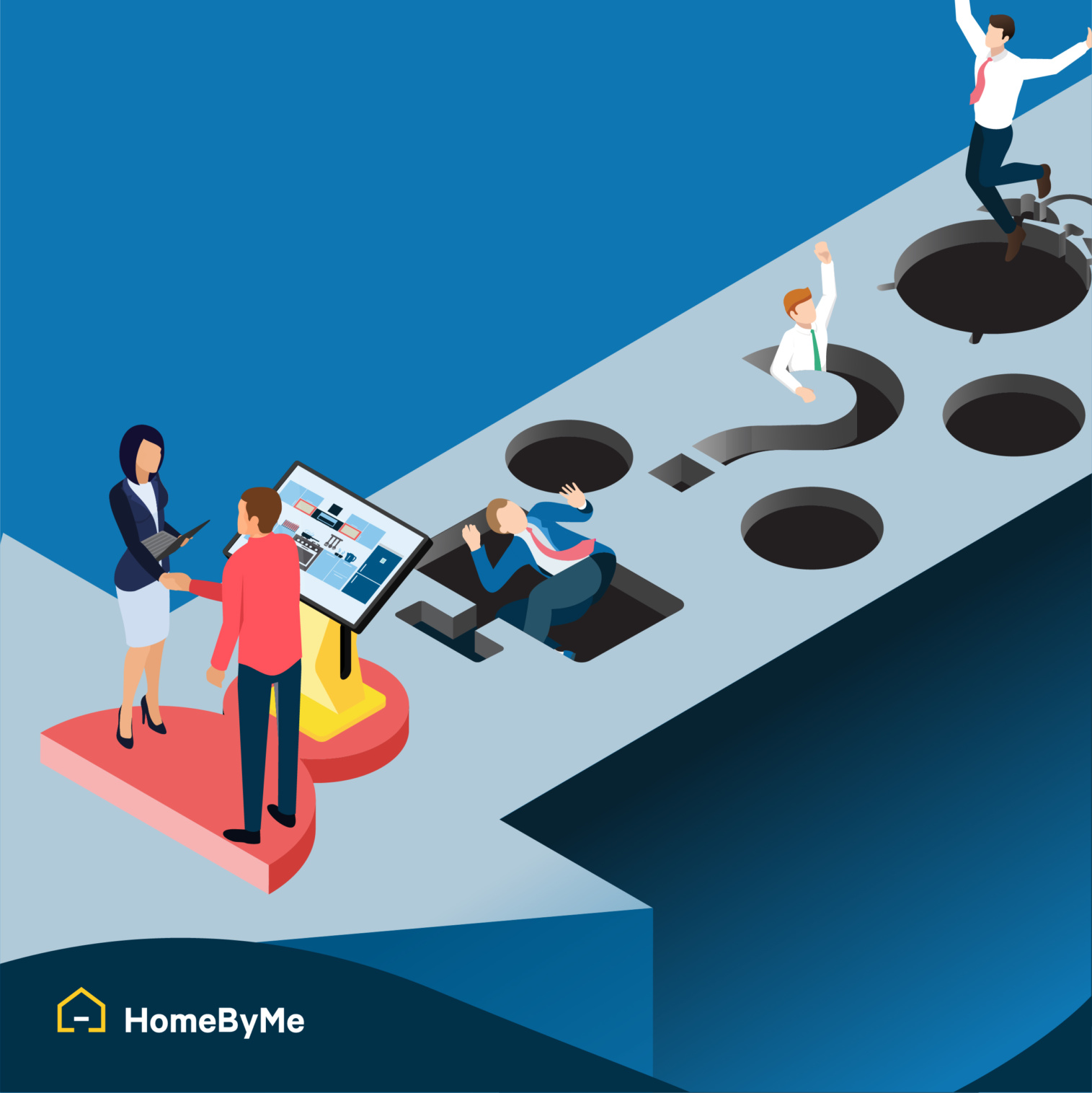Sales and Operations August 18, 2020
Navigating sales pitfalls: How 3D planning streamlines the customer journey

There are a number of common sales pitfalls that can influence a customer’s purchase journey, and the way they choose to shop in future.
The sales cycle is full of potential pitfalls. No more so than for the kitchen retailer who must steer high-value, multi-faceted sales with long lead times. And while the rest of the high street innovates with new online and automated shopping methods, kitchen retailers are faced with another challenge: meeting these consumer demands, while maintaining a consistently high level of professional input.
Is this a contradiction in terms? For kitchen retailers, it can certainly seem so. But in maintaining the status quo, they also risk missing out on a huge opportunity to streamline the customer journey, and overcome many of the pitfalls that lead to lost sales. The solution is not simply providing an e-commerce offering – in-store consultation is too important – but rather an omnichannel approach to a better overall customer experience.
Navigating Sales Pitfalls Using 3D Planning
pdf - 562.45 KBThe role of omnichannel in kitchen retail
Research points to a disconnect between the experiences that consumers want and the ones that retailers are currently providing them with. In a recent survey, just under a third of consumers said they wanted a more seamless journey both online and in-store, while only 10 percent of retailers thought a good omnichannel experience was important to customers.
And while 81 percent of consumers believe bricks-and-mortar stores are still vital to the shopping experience, the report warns that shoppers now expect to browse and purchase through an ever-increasing range of channels. More than three-quarters said retailers are not doing enough to keep up with digital trends. This applies to kitchen retailers, too.
There are a number of common sales pitfalls that can influence a customer’s purchase journey, and the way they choose to shop in future. Within the kitchen retail environment, where the stakes are high and transactions are often face-to-face, these pitfalls can amplify, undermining the enjoyment of kitchen remodeling and risking the sale altogether.
Consumers have become accustomed to browsing and planning at their leisure, and so the technology to move seamlessly between an in-store and online experience is now business critical. By centering this on an omnichannel 3D planning platform, such as the HomeByMe for Kitchen Retailers 3D planning solution, retailers can help navigate sales pitfalls and streamline the customer journey. Take the following three examples:
Pitfall #1: Lack of time
With access to an abundance of ideas and influences online, in magazines and on screen, consumers enjoy planning their new kitchen in order to make it their own, and they are spending more time doing so as a result. But for these plans to turn into a purchase, they need to visualize what works.
To enable customers to indulge and explore at their own pace, kitchen retailers require an accurate and highly visual planning solution both on their website and in-store. By alleviating time pressure in this way, customers will have greater confidence in the final design, resulting in higher levels of satisfaction and fewer errors or oversights.
Pitfall #2: Lack of confidence
Consumers seek the flexibility to choose the path to purchase that is right for them – and for a myriad of reasons. Perhaps it is for fear of the hard sell, or they simply want to focus on their remodeling project outside of opening hours; the likelihood is, at some point in the kitchen retail sales cycle, customers will now want to take their experience online.
It might seem counterintuitive, but retailers can actually increase footfall by empowering customers with a more autonomous and digitalized experience. To do so, they need a cohesive and engaging online experience that they can trust to capture the imagination and encourage customers to seek out sales assistance when the time is right. With the option for customers to access a retailer’s 3D planning solution via the website, sales professionals can allocate their time to shoppers further down the sales journey, who can benefit from a consultation that will add greater value.
Pitfall #3: Lack of information
Personalization is key to transforming the retail experience, and when it comes to high value items in particular, retailers need to know their customers. For kitchen retailers, sales professionals require the technology in place to quickly access and update their customers’ details, previous interactions and designs, whether they originated online or in-store.
Personalized sales and marketing techniques are also highly effective at improving relationships with consumers, increasing loyalty and positively impacting the bottom line. In fact, research indicates 80 percent of consumers are more likely to make a purchase when retailers offer personalized experiences. But to do so first requires reliable and relevant insight into customer browsing and purchasing behaviours, which are magnified with an omnichannel 3D planning solution.
Improving the in-store experience, online
There are many pitfalls that can slow the sales cycle, but with the right 3D planning technology, kitchen retailers can put the strategies in place that overcome these hurdles and streamline the customer journey. By investing in online channels and an omnichannel approach to capitalize on their potential, retailers can offer greater visualization and personalization to drive the in-store experience, accelerate the sales cycle and build brand equity.
Navigating Sales Pitfalls Using 3D Planning
pdf - 562.45 KB

